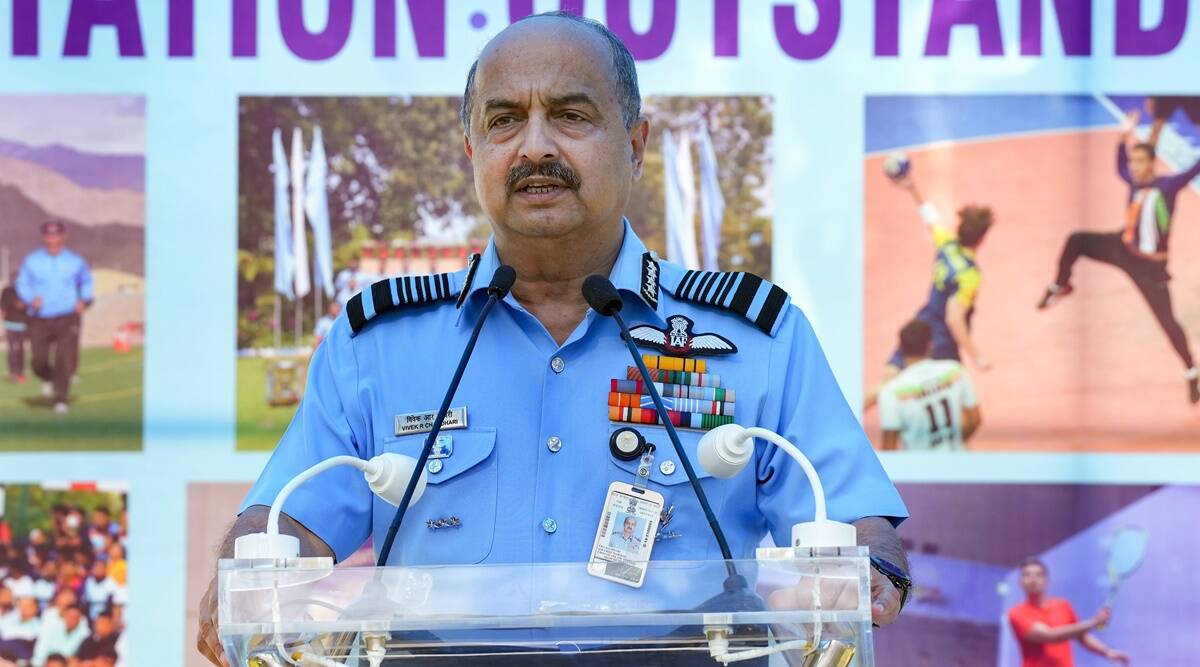IAF Commander Pushes Development, Integration of Directed Energy, and Hypersonic Weapons

On Tuesday, Air Chief Marshal V R Chaudhari said that while other countries have tested and used Directed Energy Weapons (DEWs) and Hypersonic Weapons, India’s defence industries must push the development of these weapons and integrate them into its airborne platforms to achieve the desired range and accuracy.
He also stated that the ongoing Ukraine conflict has demonstrated that technological capability must be supplemented by combat sustenance and that Indian defence industries must adhere to the twin mantras of technical quality and production scalability in order to meet the needs of armed forces in any future conflict.
The Indian Air Force Chief was addressing at the second edition of Def-Tech India, an event on ‘India’s Aerospace Capabilities and Technological Needs’ organised by PhD Chamber of Commerce and Vision Initiatives. Russia, France, Germany, the United Kingdom, Israel, and China reportedly have programmes to create DEWs or Laser Directed Energy Weapons, and numerous countries’ forces have used them.
The IAF Chief stated that DEWs, particularly lasers, provide significant advantages over traditional weapons, such as precision engagement, low cost per shot, logistical benefits, and low detectability, stating that weapons in India 100 years after independence would look very different from weapons in India 75 years.
“Our defence companies must continue to develop these weapons while also integrating them into aerial platforms to achieve the needed ranges and accuracy,” he said.
He went on to say that the concept of Atmanirbharta, or self-reliance in defence, should not be limited to production, but should also include evolving home-grown designs and development capabilities by leveraging the Indian defence industry, start-ups, MSMEs, and academia to create a self-sustaining defence R&D ecosystem.
He believes that identifying core areas of development, clearly articulating requirements, and directly interacting with the industry to design and create the technology is the key to speedier development of niche technology.
“The procedure does not end here. “Well-established defence manufacturing public-sector businesses must work together to get developed technology into the market for mass production,” he said.
“Until all parties join together, I am afraid, we will continue to wallow in the dark and not see tangible progress. “This is where domestic R&D and production — whether it’s platforms, sensors, weapons, or networking — plays a crucial role in building future capability,” he added.
Previously, technological developments resulted in incremental improvements to existing systems in terms of range, weapon delivery precision, and sophistication, according to ACM Chaudhari. “Now, game-changing technologies like as quantum computing, artificial intelligence, robotics and autonomous systems, and the Battlefield of Things are knocking on the doors of defence production,” he stated.
He believes that the implementation of these technologies in the aircraft industry will change the way battles are fought. “…we need to include and infuse these technologies in our future endeavours. This will allow us to develop cutting-edge platforms, weapons, sensors, and networks required to fight and win a future conflict,” he stated.
The IAF Commander also identified areas in which the Indian aerospace industry should invest and succeed.
He stated that intelligent military ecosystems are the battlefield’s future, and that these systems must be highly mobile and networked, backed by communication, and capable of working across domains.
“AI-assisted military options will include multidomain integration, cross-domain attack, and interoperability between human and unmanned systems.” “In the future, AI and Quantum Computing working together could be a game changer, offering speedy and accurate inputs and enabling time critical judgements,” he said.
He also stated that AI would help India to have strategic dexterity in the future, with warriors being able to exploit all available assets simultaneously and more efficiently.
He also stated that advanced technologies in unmanned aerial vehicles (UAVs) or drones have increasing applications and practical relevance today and in the future, and that the use of such evolving technology in the military context, such as swarms, will lead to a much higher demand for UCAVs and UAVs in the future.
He stated that research in drone-related technologies, such as quantum drones (QD) and quantum computers, is already underway and will have an impact on the aerospace ecosystem by enabling efficient and accurate modelling, optimization of complex systems, and data processing capabilities.
“Development of UAV technology within the quantum world shall elevate concepts such as Manned Unmanned Teaming (MUM-T) to far greater heights, giving a new degree of interoperability that could make a significant difference in tomorrow’s wars,” he stated.
“India should look at embracing, absorbing, and, more crucially, indigenously developing such niche technology,” he added.
He went on to say that the introduction of stealth technology is a significant achievement in military aviation, and that advances in radar and stealth have launched a cat and mouse game between radars, SAM systems, and attacking aircraft.
“We need to utilise this technology to suit our future objectives and to have an edge. “As a country, we must prioritise research and development and manufacturing in the realm of stealth and anti-stealth technology,” he stated.
He stressed the importance of end-user and developer collaboration, as well as cross-pollination between the industry and the IAF, to guarantee that India has an air force capable of meeting all challenges faced by its adversaries today and in the future.
He stated that the IAF has proven its capacity across the whole spectrum of warfare, including peace, no war-no peace, and conflict scenarios, and that India is on the path of transformation to fight and win tomorrow’s wars.
“In our inventory, we are in the process of purchasing and implementing cutting-edge systems.” Simultaneously, the process of modernising the existing inventory of aircraft, weapons, and other combat support systems continues uninterrupted,” he added, adding that indigenous platforms such as the LCA Mk 1A, HTT-40 trainers, indigenous armaments, and a wide range of radars will be introduced soon.



